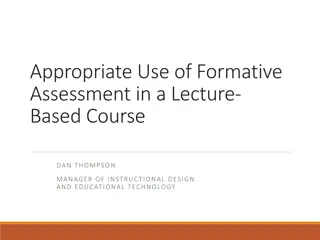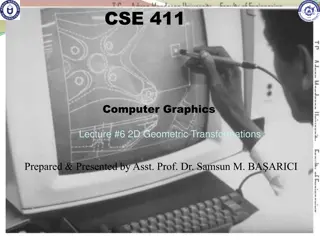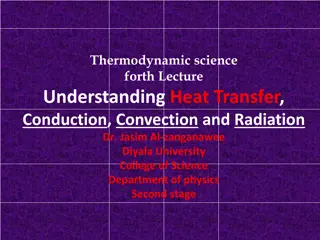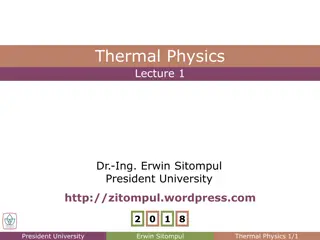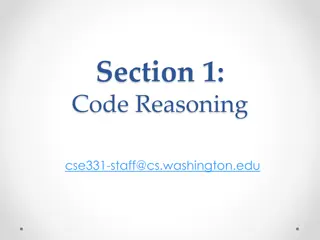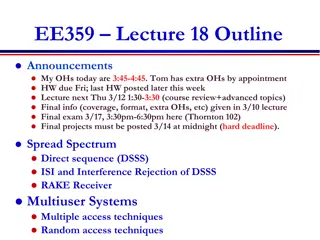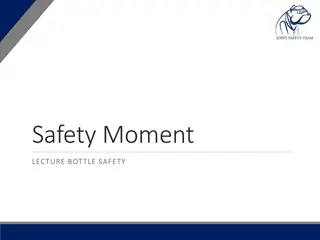
Error Detection and Correction in Digital Logic Design
Explore the concepts of error detection and correction in digital logic design, including codes for error detection and correction, basic properties, Hamming code, parity check, and more. Understand how to detect and correct errors introduced during transmission through various algorithms and techniques.
Download Presentation

Please find below an Image/Link to download the presentation.
The content on the website is provided AS IS for your information and personal use only. It may not be sold, licensed, or shared on other websites without obtaining consent from the author. If you encounter any issues during the download, it is possible that the publisher has removed the file from their server.
You are allowed to download the files provided on this website for personal or commercial use, subject to the condition that they are used lawfully. All files are the property of their respective owners.
The content on the website is provided AS IS for your information and personal use only. It may not be sold, licensed, or shared on other websites without obtaining consent from the author.
E N D
Presentation Transcript
ENEE244-02xx Digital Logic Design Lecture 3
Announcements Homework 1 due next class (Thursday, September 11) First recitation quiz will be next Monday, September 15, on the material from lectures 1,2. Lecture notes are on course webpage.
Agenda Last time: Signed numbers and Complements (2.7) Addition and Subtraction with Complements (2.8-2.9) This time: Error detecting/correcting codes (2.11, 2.12) Boolean Algebra Definition of Boolean algebra (3.1) Boolean algebra theorems (3.2)
Codes for Error Detection and Correction
Codes Encode algorithm Enc(m) = M. m is the message, M is the codeword. Enc is one-to- one. Decode algorithm Dec(M) = m Usually use to detect and correct errors introduced during transmission. Assume M is in binary Would like to detect and/or correct the flipping of one or multiple bits.
Error Detection/Correction Basic properties: Distance of a code: minimum distance between any two codewords (number of bits that need to be flipped to get from one codeword to another) Rate of a code: |m|/|M| Distance determines the number of errors that can be detected/corrected. Would like to find codes with optimal tradeoff between distance and rate.
Error Detection/Correction Error detection: can detect at most ????-1 errors, where ???? is the minimum distance of the code. Error correction: can correct at most (???? 1)/2 errors Error correction and detection: ???? + ??? = ???? 1,???? ???
Error Detection: Parity Check Encode: On input m = 11001010 Output M = 11001010|b, where b is the parity of m. b = 1 1 0 0 1 0 1 0 = 0 Decode: On input M = 11001010|b, output 11001010 Error detection: If a non-party bit is flipped If the parity bit is flipped
Error Correction: Hamming Code For message of length 4 bits: 7 6 5 4 3 2 1 Position ?4 ?3 ?2 ?3 ?1 ?2 ?1 Code group format Where ?1= ?????? ?? ????????? 3,5,7 (?1 ?1 ?2 ?4= 0) ?2= ?????? ?? ????????? 3,6,7 (?2 ?1 ?3 ?4= 0) ?3= ?????? ?? ????????? 5,6,7 (?3 ?2 ?3 ?4= 0) Parity-check matrix for the above code: 1 0 1 1 1 0 1 1 1 ?4 ?3 ?2 ?3 0 0 1 1 1 0 ?1 ?2 ?1 0 1 0 1 0 0 First parity check Second parity check Third parity check
Example of Hamming Code for message length 4 7 6 5 4 3 2 1 Position ?4 ?3 ?2 ?3 ?1 ?2 ?1 Code group format 7 6 5 4 3 2 1 Position 1 0 0 ?3 1 ?2 ?1 Code group format 7 6 5 4 3 2 1 Position 1 0 0 ?3 1 ?2 0 Code group format 7 6 5 4 3 2 1 Position 1 0 0 ?3 1 0 0 Code group format 7 6 5 4 3 2 1 Position 1 0 0 1 1 0 0 Code group format
Which bit is flipped? For message of length 4 bits: 7 6 5 4 3 2 1 Position ?4 ?3 ?2 ?3 ?1 ?2 ?1 Code group format Where ?1= ?????? ?? ????????? 3,5,7 (?1 ?1 ?2 ?4= 0) ?2= ?????? ?? ????????? 3,6,7 (?2 ?1 ?3 ?4= 0) ?3= ?????? ?? ????????? 5,6,7 (?3 ?2 ?3 ?4= 0) Parity-check matrix for the above code: 1 0 1 1 1 0 1 1 1 0 0 1 1 1 0 0 1 0 1 0 0
Hamming Code for arbitrary length messages Parity-check matrix: 1 0 1 1 1 0 1 1 1 0 0 1 1 1 0 0 1 0 1 0 0 ? parity bits 2? 1 codeword length Message length = 2? ? 1 Hamming code has optimal rate of: 2? ? 1 2? 1 = 1 ? 2? 1
Single Error Correction, Double Error Detection Can achieve this by adding an overall parity bit. If parity checks are correct and overall parity bit are correct, then no single or double errors occurred. If overall parity bit is incorrect, then single error has occurred, can use previous to correct. If one or more of parity checks incorrect but overall parity bit is correct, then two errors are detected.
Boolean Algebra Provides a way of describing combinational networks and sequential networks. Can express the terminal properties of networks that appear in digital systems. Correspondence between algebraic expressions and their network realizations. To find optimal networks can manipulate and simplify corresponding Boolean algebraic expressions.
Definition of a Boolean Algebra A mathematical system consisting of: A set of elements ? [0/1 or T/F] Two binary operators (+) and ( ) [OR/AND] = for equivalence, () indicating order of operations Where the following axioms/postulates hold: P1. Closure For all ?,? ?,? + ? ?,? ? ? P2. Identity There exist identity elements in ?, denoted 0,1 relative to (+) and ( ), respectively. For all ? ?,0 + ? = ? + 0 = ?,1 ? = ? 1 = ?.
Definition of Boolean Algebra P3. Commutativity The operations (+), ( ) are commutative For all ?,? ? ? + ? = ? + ?, ? ? = ? ? P4. Distributivity ***Each operation (+), ( ) is distributive over the other. For all ?,?,? ?: ? + ? ? = ? + ? ? + ? [? ?? (? ??? ?)] ? ? + ? = ? ? + (? ?) [? ??? (? ?? ?)]
Definition of Boolean Algebra P5. Complement For every element ? ? there exists an element ? ?called the complement of ? such that: ? + ? = 1 ? ? = 0 P6. Non-triviality There exist at least two elements ?,? ? such that ? ?.





